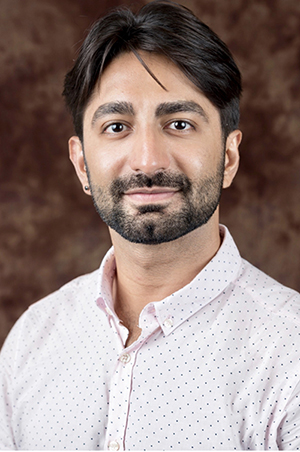Oral Health Month Reflection: Dr. Abbas Jessani
Dear Colleagues,
It was the summer of 2016, or rather, winter in Lesotho, when me and my colleagues were participating in a two-week oral health outreach project in Maseru, Lesotho. There were six of us, along with a few local nursing students, stakeholders, academics and dental professionals collaborating on a project to identify the unmet oral health needs of adolescents in the country.

On this day, we were visiting Semonkong Secondary School, located in the highlands approximately 112 km outside the city of Maseru. This is one of 10 public schools we visited to collect surveys and clinical data to understand the unmet dental needs in one of the world’s most impoverished countries. We were received with warmth and smiles, like every other school we had visited. As per the plan, we collected our surveys with the help of the nursing students and performed dental exams. At the end of this exercise, me and colleagues went to all the classrooms and talked about the importance of maintaining good oral health.
After this particular session, a student who was probably in grade seven or eight followed me outside for a private conversation. He expressed genuine concern and sadness for his mother, who was suffering from a severe toothache for a few weeks. His eyes teared up while he described his mother’s agony and the pain.
I learned that his family did not have access to a dentist, and the doctor his mother consulted couldn’t help much. At that time, I had no other option than to connect him with our local guide in hopes that he could help the child and his mother find a dental care provider. He graciously thanked me and said, “I wish I can be like you one day, so my mother can never experience such pain”.
These words have been with me ever since, and always remind me how powerful and essential the role of dental care providers is within the health care system. This experience also reminds me that this is not an isolated story of disparity in accessing the dental care system. This is the story of millions who do not have access to very basic oral care services.
I have experienced this disparity firsthand during my dental training in Pakistan, where the vast majority of the population is not aware of the importance of oral health and dentistry. Usually, dentistry is accessed either for emergency purposes or by affluent classes for cosmetic reasons.
To my surprise, things were not much different when I started my post-graduate training at the University of British Columbia. While working with and mentoring dentistry undergraduate students in the clinics and various community dental outreach sites, it was surprising and difficult to comes to terms with the fact that access to oral care services among marginalized populations in Canada is not much different than in Lesotho or Pakistan.
According to the 2011 Canadian Health Measure Survey, 4.15 million adult working days are lost annually due to dental reasons, and many people seek dental care for emergency purposes only. 85 per cent of Indigenous children have tooth decay, versus 23 per cent of non-Indigenous Canadian children. When comparing the extraction rates of Indigenous vs non-Indigenous populations, the rates are 20 vs one extraction per 100 teeth.
Canadians within vulnerable populations, such as those with low socioeconomic status, living with HIV/Hep C, living in long-term care facilities, gender minorities, homeless community members, and others, not only experience disproportionately high unmet oral healthcare needs but also stigma and discrimination due to their psychosocial status. This adds another barrier in accessing oral health care services. The current pandemic has made this disparity even more pronounced.
This pandemic has impacted access to oral health care for our most vulnerable populations, and further highlighted some of the most obvious and yet largely ignored ‘cracks’ in the ‘pay out of pocket’ model of oral health care delivery. Approximately 62 per cent of Canadians rely on their employer-sponsored plans to access basic oral health care, and now, the millions of Canadians who have lost their jobs due to this pandemic have also lost access to dental care.
The most recent evidence suggests that delays in providing dental treatment due to lockdowns has exacerbated the severity of dental infections, and has increased their associated financial burden. This pandemic has also highlighted the fact that to increase access to oral health care we, as a profession, have to think outside the box and incorporate virtual and teledentistry as a part of routine dental care.
As a profession, it is time we reaffirm our commitment to better serving the communities of highest risk while providing the best person-centered evidence-based care to our patients. It’s time for Canadian health care policymakers to acknowledge the symbiotic relationship between oral health and general health and provide an avenue to acquire basic preventative oral healthcare services. As we move forward with the lessons learned from this pandemic, we must work toward better integration of basic oral health education into health care curriculums, including medicine and nursing, to foster this relationship between general and oral health. After all, there is no health without oral health.
Sincerely,
Dr. Abbas Jessani
Director, Dental Outreach And Community Service
Assistant Professor, Restorative Dentistry
Schulich School of Medicine & Dentistry
Western University








